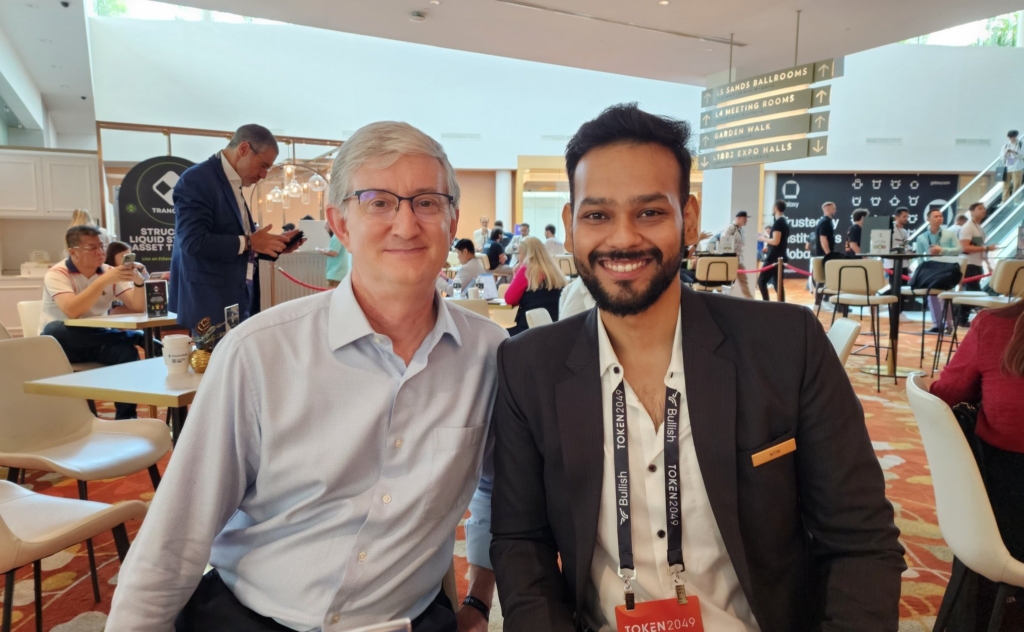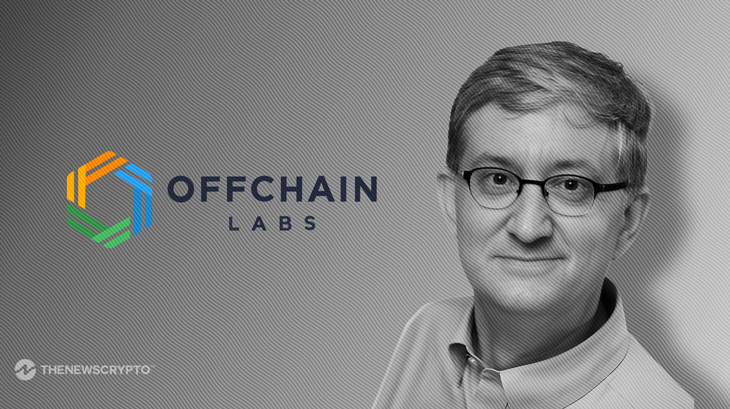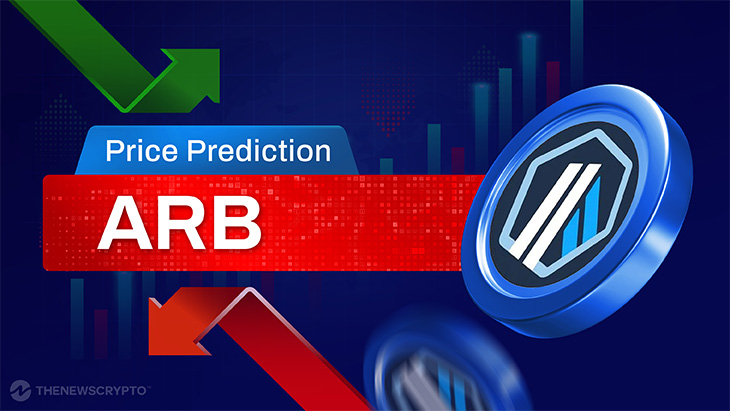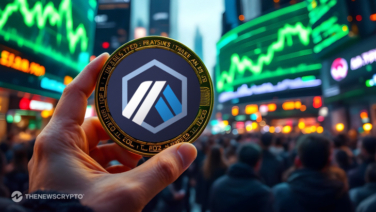Layer 2 scaling solutions, like Polygon, Arbitrum, and Optimism, are improving different aspects of L1 blockchains, including decentralization, security, and interoperability. Meanwhile, Layer 3 networks, with their application-specific paradigm, are customizing trends and progress in the broader blockchain ecosystem. New paradigms and decentralized applications (dApps) are continually emerging in this space.
In a recent conversation with TheNewsCrypto at Token2049 Singapore, Ed Felten, the co-founder and chief scientist of Offchain Labs, shared insights on the role of Arbitrum in the emerging Layer 3 era, the impending utilities of ARB, forecasts for GameFi, and more.

Layer 2 solutions have gained traction in the blockchain landscape, but they are also facing scrutiny regarding their roles. How does Arbitrum distinguish itself, and what sets Offchain Labs apart in this competitive space?
Ed Felten (EF): Offchain Labs differentiates itself by offering Arbitrum, a Layer 2 solution that is built on top of Ethereum. Ethereum has a vibrant and active community of developers and users, and we wanted to be part of that ecosystem. Arbitrum is one of the most mature Layer 2 solutions, offering security, decentralization, and a battle-tested stack. We’ve also been successful in building a strong community around Arbitrum, which is crucial for its long-term success.
Ethereum has such a great community. we’re really happy to be part of it. From the beginning with Arbitrum, we had hoped to develop that same kind of community. I believe that we’ve been quite successful among the L2s. It’s really an important part of succeeding, is to develop a community of users who are familiar with the technology and then to deliver to them what they want and expect from the chain.
What makes Arbitrum a superior choice in the GameFi and how is OffchainLabs redefining the landscape?
EF: GameFi is a rapidly growing sector in the blockchain space, and Arbitrum is well-positioned to support it. We offer a mature and high-performance platform for game developers. Arbitrum excels not only in aspects such as security and decentralization but also in having a well-proven infrastructure. Additionally, it has gained valuable experience by collaborating with a diverse range of users and adapting to various scenarios, which contributes to its strength.
Our innovations, such as Stylus, allow developers to write smart contracts in familiar languages and achieve faster execution speeds. This is crucial for game developers who need high-performance environments. Additionally, being fully composable with Ethereum gives Arbitrum a significant advantage for Web 3 development, including GameFi projects.
Ethereum has been dominant as Layer 1 in the blockchain space. Do you foresee other Layer 1 chains sharing that space with Ethereum?
EF: Ethereum’s dominant position in the blockchain space and that will continue. However, as Layer 2 solutions and Layer 3 chains become more prominent, Ethereum’s role will evolve. Vitalik Buterin has discussed Ethereum’s future as a security foundation for Layer 2 and Layer 3 chains. Ethereum will provide the security functionalities that technologies like Arbitrum can leverage to offer scalability and lower costs. As adoption grows, cost-efficiency becomes increasingly crucial, and Ethereum’s role in the ecosystem remains vital.
How do you view the significance of lower costs in the blockchain industry, especially in light of potential future adoption, and how do you plan to address this critical aspect?
EF: As you rightly mentioned, increasing costs become a significant concern as you scale up. However, it’s essential to recognize that different types of applications have varying cost thresholds that need to be met. Much like the evolution of personal computers and the internet, significant advancements in capacity lead to the emergence of new application categories. This principle holds true for both the cost and scalability aspects of Layer 2 solutions. With each generation and substantial improvements in scalability and pricing, new possibilities for applications come to the forefront. Currently, we’re witnessing this pivotal moment in various on-chain gaming applications.
Ethereum and Arbitrum have introduced account abstractions, allowing application and wallet providers to offer a seamless, gasless experience where they cover the transaction costs. While this improves user experience, it’s essential to acknowledge that the underlying economics remain unchanged. Gas fees are still incurred by someone, and transferring these costs to a third party simplifies the user experience. However, in the long run, scalability demands lowering these costs to ensure the numbers align and make sense, particularly as blockchain adoption grows.
What is the specific utility of the ARB token, and could you explain its current purpose as well as how it may evolve in the future?
EF: Most importantly, the ARB token serves as the governance token for Arbitrum. ARB token holders have the power to participate in governance decisions, either by voting or delegating their votes. The Arbitrum DAO controls the DAO Treasury, which includes ARB and ETH collected from net transaction fees on Arbitrum chains. The DAO decides how to allocate these resources to support the ecosystem’s growth. While governance is its primary role, the ARB token’s future utility may evolve based on DAO proposals and community decisions.
Some critics argue that introducing a tradeable token can lead to overemphasis on token price and speculation. What’s your perspective on this, considering the correlation between token price and network success?
EF: It’s true that introducing a tradeable token can lead to price speculation. However, it’s challenging to facilitate community governance effectively without a token. Governance tokens enable a liquid and flexible form of representative democracy through delegation. While the token price may attract attention, the focus should be on governance decisions that drive the project’s success. Community members can participate in governance and help shape the project’s direction, regardless of token price fluctuations.
Why was the firm named Offchain Labs, and are there plans to develop anything beyond Arbitrum?
EF: We deliberately avoided naming our company after specific technologies. “Offchain Labs” reflects our mission to choose technologies that best solve developers’ and users’ problems, which may evolve over time.
Our primary focus has been on the development of the Arbitrum ecosystem. This entails not only enhancing the existing infrastructure but also expanding into areas like the Arbitrum Orbit Ecosystem. Here, we are creating application-specific or customized Layer 3 chains, offering greater flexibility and scalability. In essence, we are extending our focus beyond Layer 2 chains to encompass Layer 3 Orbit chains.
Ethereum has struggled with scalability on L1, leading to the emergence of L2 solutions. L2s offer scalability while relying on L1 security. How would you describe the role of L3 in this context?
EF: While Layer 2 solutions like Arbitrum enhance scalability and cost-efficiency, Layer 3 chains take customization to the next level. Layer 3 chains, such as Orbit, provide customization options that cater to specific project requirements. For example, they can launch their own token economics, gas token models, or unique functionalities. Additionally, Layer 3 chains allow projects to tightly integrate specific oracles, making them suitable for applications with specialized data requirements.
They also offer greater control over infrastructure and operation, making them a versatile choice for projects seeking a high degree of customization. Ultimately, Layer 3 chains offer the freedom to experiment and design blockchain networks tailored to specific needs.
How do you envision the future of Layer 3 chains? What exciting developments are on the horizon?
EF: The future of Layer 3 chains holds exciting possibilities. We are actively working on transitioning Stylus technology to production use, with security audits and mainnet launches in the pipeline. We are also making validator roles more permissionless and exploring ways to capture MEV value within the ecosystem. Decentralization of the sequencer is another crucial aspect of our roadmap. Additionally, we have collaborations with projects like Espresso Systems to make these advancements a reality. We believe Layer 3 chains will continue to expand and innovate, providing diverse options for blockchain customization.
Disclaimer: The information provided in this interview article is for informational purposes only. It is not intended to be, nor should it be construed as, investment advice, financial guidance, or a recommendation to make any specific decisions. Readers are encouraged to conduct their own research.








